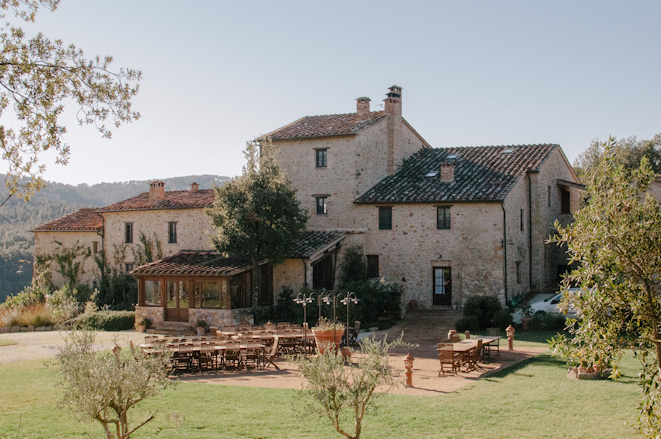
Emerging from the deep Tuscan forest it is hard not to gasp at the striking beauty of Villa Ferraia. It’s a series of connected buildings made of stone with red tiled roofs surrounded by olive and lemon trees, potted flowers, patches of rosemary and wild growth. There is a giant infinity pool and large chessboards on the lawn. Perhaps most spectacular of all is the view across the wooded valley.
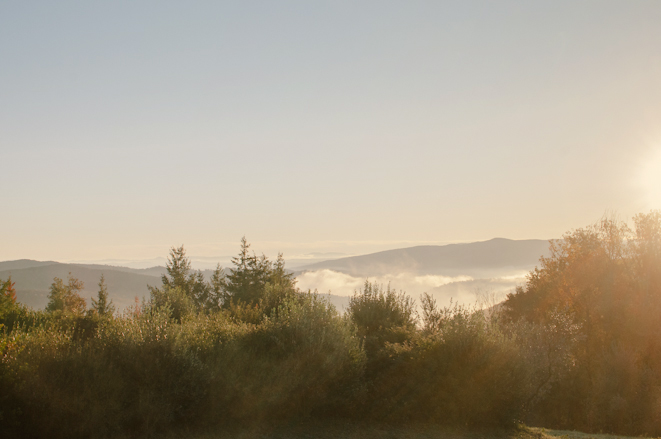
I got an invitation to visit Villa Ferraia from the charming owners, Vittorio and Patrizia Cambria and I was eager to take a break from the chaos of Rome, relax in luxury and, as they promised, in harmony with nature. Vittorio had seen me talking about US politics on Italian television and had hunted around on internet until he found this blog. He invited me to come visit Villa Ferraia because he wanted advice on what appeals to Americans and how he might use social media to spread the word about Villa Ferraia. Unsure that Mozzarella Mamma herself would be able to help, I asked my blog designer and photographer friend Nicolee Drake (of Instagram fame) to join me.
Little did I know that it wasn’t just a visit to a Tuscan Villa, I would be visiting a working farm, an observatory, a cooking school, a medieval village, and a horse stable while enjoying fabulous food and spectacular views.
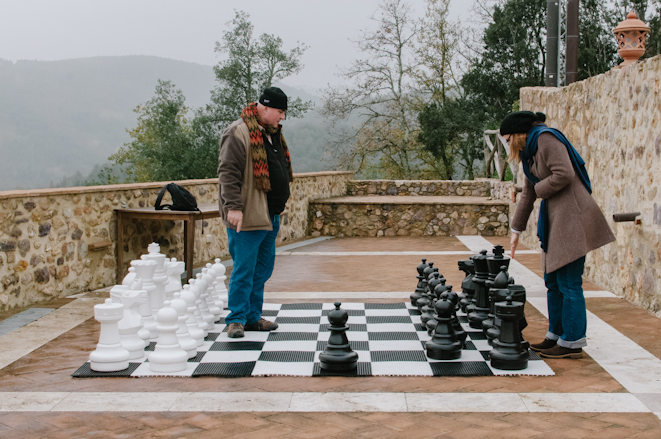
The name Ferraia comes from the Italian “ferro” or iron. Vittorio explained to me that in medieval times, iron was extracted here. The Merse River and the Farma Falls gave water power and the forest provided timber for the fusion. Apparently having a source of metal helped the city-state of Siena in its frequent battles with Florence. The area was annexed by the Siennese Republic in 1204 and came under the ownership of a certain Guccione di Ferraia. The last 200 years it was an self-sufficient farmhouse with food and clothing all being produced on the land. The only products received from the outside world were salt, tobacco and needles for sewing.
Vittorio and Patrizia discovered the place in the early 1990s and decided to buy it and restore some of it for extra space for their cooking school in the nearby medieval hamlet Tocchi and their horse-backing riding trips for tourists. The farmhouse was abandoned with parts of the roof missing and the forest had grown up around it. It didn’t take long for the restoration project to become a passion and the Cambria’s threw themselves into restoring the entire place, battling with rigid goverment regulations and dubious locals. Vittorio and Patrizia worked on the farmhouse for two years before turning to the surrounding area trying to making the farmhouse harmonious with the land. It took Vittorio and Patrizia 15 years of hard work before they were finally able to open up Villa Ferraia to guests.
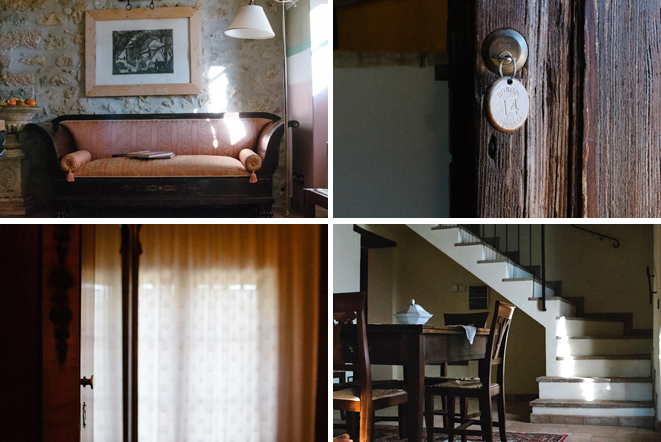
Visiting Villa Ferraia in the winter months offers a whole new set of sensations. The rooms are warm and cozy with the soft winter light coming through the windows. The smell of woodsmoke rises from the fires burning in the kitchen and dining area. We had the place almost to ourselves and felt cozy in the intimate, comfortable rooms. In order to attract more guests in the winter months the Cambrias have set up a Wintering program, adding Beauty Spa elements in a Roman style with hot tubs, saunas, and massages with special honey and spices.
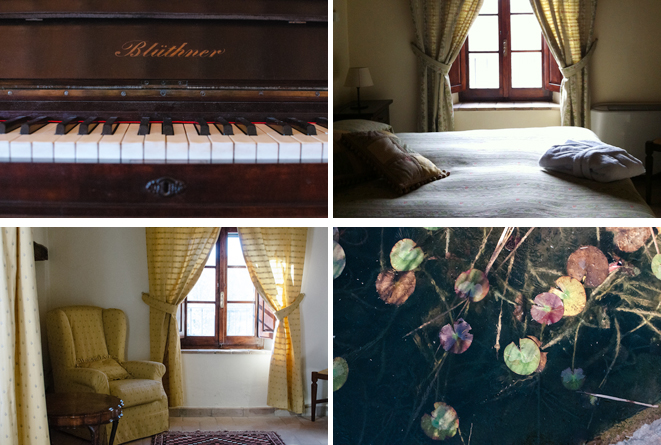
The land surrounding the farmhouse is a combination of luxury and practicality. On the hillside beyond the infinity pool, there is a line of solar panels. From the farmhouse one sees forest in all directions, but taking a walk with Vittorio down into the valley we discovered a huge number of animals kept on the farm.
The first stop was the pigs. Wow! What an incredible pig party. The snorting black pigs were happily gobbling up some corn and we couldn’t tempt them with some handfuls of grass. There are 50 pigs grazing in the lower field of Villa Ferraia and they are Nero di Nebrodi, a breed from the mountains of northern Sicily.
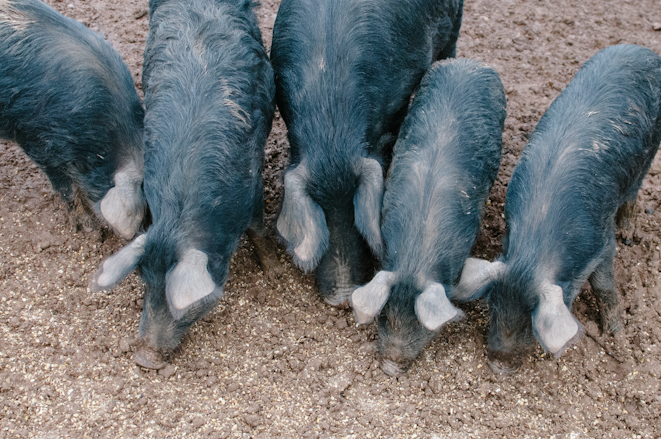
The pigs are used to make a variety of products served at Villa Ferraia. While I was there we ate delicious Arista di Maiale Con Capperi ( Pork Roast with Capers) at dinner, and then my daughter Caterina enjoyed having their special “pancetta” (Italian bacon) every morning for breakfast.
In addition to traditional Italian cooking lessons, Villa Ferraia offers lessons in preparation of traditional pork products. Every week from November through March they prepare prosciutto, sausages and bacon, and spiced lard, to name a few.
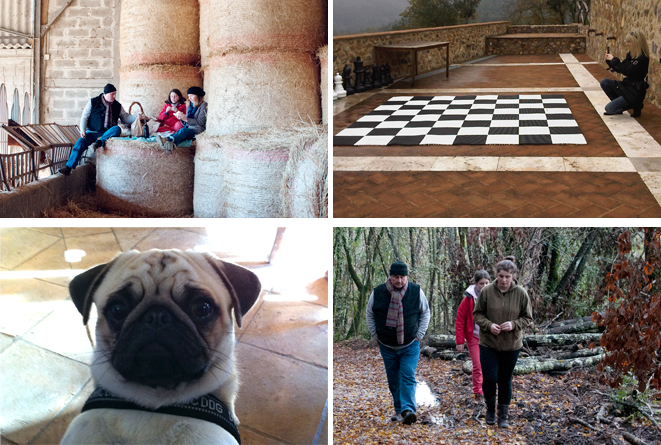
Past the pigs we found twelve cows, several friendly donkeys (which Vittorio explained are much smarter animals than horses) and goats.
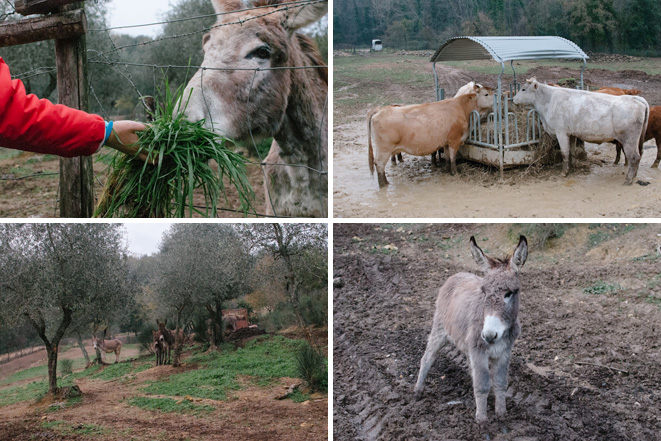
There is a large vegetable garden and greenhouse to provide a wide selection of fresh vegetables and herbs for the farm– lettuce, cabbage, broccoli, pumpkin, zucchini, spinach, tomatoes, eggplant and peppers etc. Eating at the Cambrias table is a natural mix of what the Slow Food and Kilometer Zero movements have been promoting: eating good food, produced nearby prepared in a way that respects local culture and traditions.
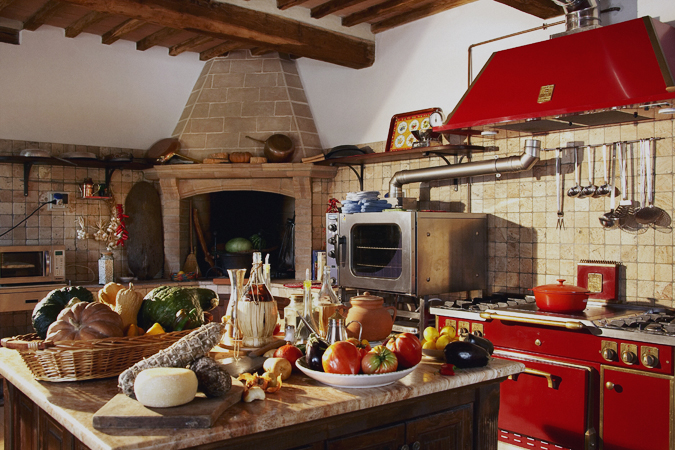
My daughter Caterina and I bounced around the back seat of the Cambria’s big white Land Rover nearly bonking our heads on the roof as Vittorio took us flying down the steep dirt roads to see their stables with their collection of 16 horses used to take visitors on horseback riding excursions in the area.
While at Villa Ferraia with my photographer friend Nicolee Drake, and my daughter Caterina, we had the opportunity to take a 5 kilometer hike across the valley with Vittorio Cambria and his daughter Anna. While enroute Vittorio regaled me with tales of his battles to make Villa Ferraia what it is today. To sum up,Vittorio has had to battle wild boars , take on hordes of determined hunters (sprinkling the ground with pure pepper to block up the noses of the hunting dogs), and challenge bureaucrats at all levels in his efforts to protect his property and projects.
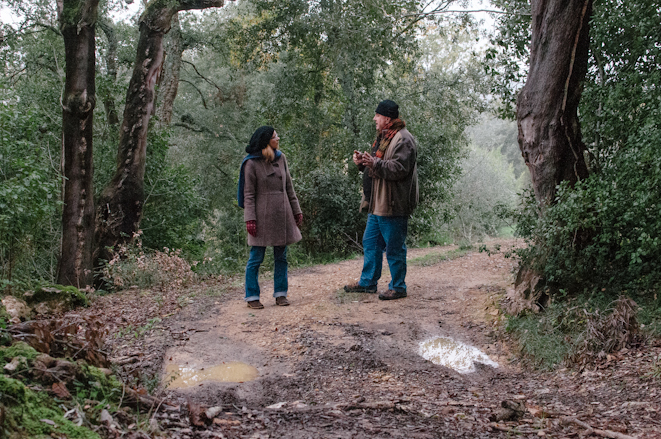
A little background on Vittorio Cambria and his unusual life. He graduated in Philosophy from the University of Florence, but also studied and has various degrees in psychiatry, ethnology, with a thesis in what he told me is “etnoiatria”, the study of medicine through culture, and finally a degree in herbal medicine.
His interest in other cultures and ethnographic studies led him to drive a Ford truck from Italy to Afghanistan, travelling also to India and Nepal. A beautiful tent of black wool that he got from the Kuchi nomads and brought back with him from Afghanistan, is still on display at the Museum of Ethnology in Florence.
Back in Tuscany he went to work raising bees and producing causasica/ligustica queen bees that were sold in France to make “pappa reale”, Royal Jelly. He also began to raise Maremmani and Arabian horses.
His interest in animals, natural methods of food production, philosophy and other cultures came together in Villa Ferraia. As Vittorio explains it, he was inspired by the idea of a Roman Villa, and the concept of Otium. Otium is a latin word meaning a place for the soul and a place for physical relaxation and pleasure. Romans practiced Otium in the Roman baths where people would gather and relax while discussing matters of the world. Otium is the opposite of negotium (the negation of Otium) which is similar to the Italian “negozio” or store, intending place of work.
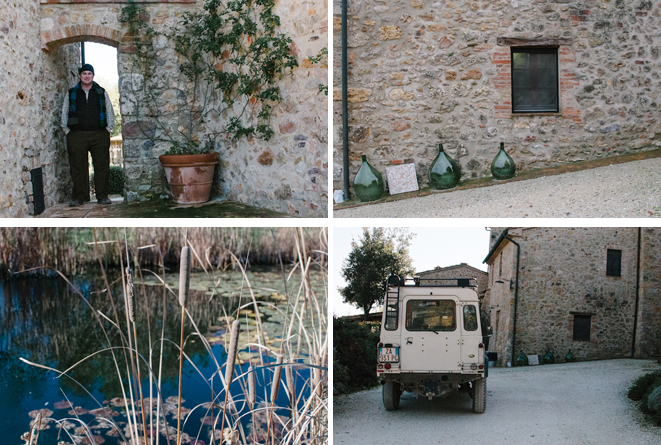
Perhaps the most gratifying moments at Villa Ferraia are when one is seated at their long dining room table enjoying the fabulous food cooked up by Patrizia in their large kitchen. At the far end of the table are portraits of Vittorio’s great-great-great Sicilian grandfather Angelo Cambria and his wife. As we dug into pumpkin lasagna and homemade whole wheat bread, I couldn’t help appreciating Angelo’s watch-chain stretching across his belly, his bow tie and the elegant gloves he was clutching in his hand.
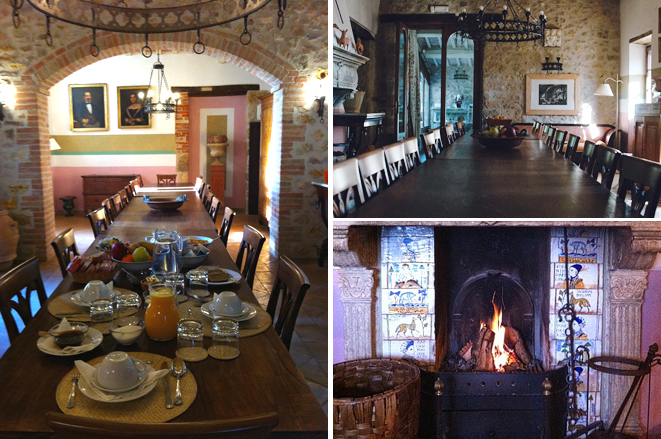
Meals at Villa Ferraia were a succession of fabulous dishes…bean soup with homemade giant garlic croutons sprinkled with a few drops of fresh olive oil, a scrumptious mushroom risotto with several varieties of mushrooms gathered from the surrounding forest, and prosciutto and salami made on the farm.
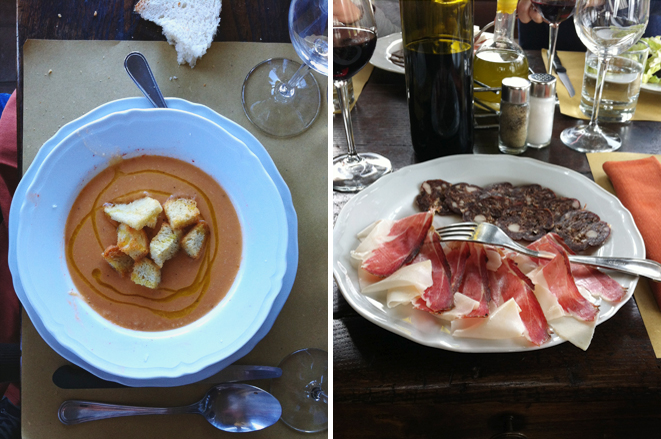
When they discovered that their isolated location was one of the best places in Italy to view the stars, the Cambrias added an Astronomical Observatory. Our second night at Villa Ferraia there was a young couple from Brescia who had come to spend the night star-gazing with an astronomer in the observatory. The couple sat next to us at dinner and they were so sweet and clearly so in love that they could barely keep their eyes off each other. I wondered how they would manage to drag their eyes away to stare at the stars all night.
Over the years Villa Ferraia has attracted guests from as far away as India, Japan, South Africa, Argentina, the US and Russia, to name a few places. The Cambria’s goal is to attract more groups — weddings, family reunions, 50th birthday parties, and more self-sufficient retired people. Certainly, Villa Ferraia offers a different kind of Tuscany to its guests. It is not just the red wine, olive oil and swimming pool– it is a hidden jewel of economic sustainability where guests get the benefits of locally produced food in a luxurious, exclusive environment.
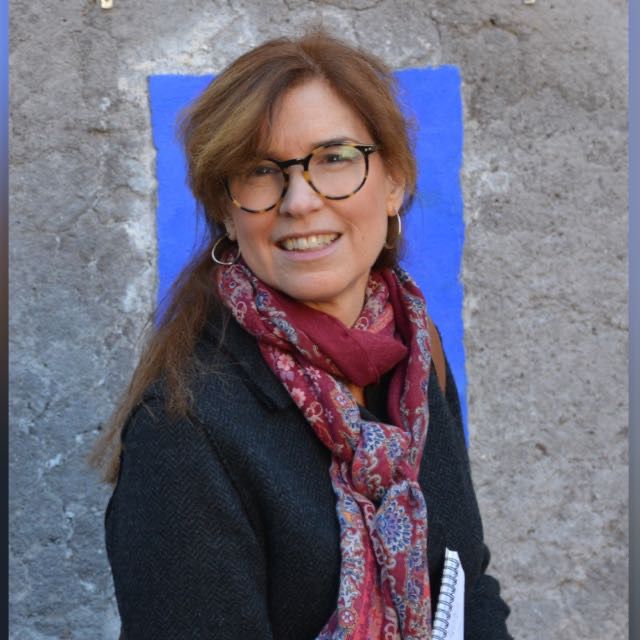
How timely. My husband just asked me to look into a trip to the Tuscan wine country! I will keep this on file….
Well then Villa Ferraia is the right place for you. It is heavenly!
You had me convinced on the first photo! It looks like a true Tuscan Treasure! We need a 50th b-day party next December at Villa Ferraia, don’t we (hint, hint, Gustavo Piga)?! I can dream can’t I? Lovely write-up!
The 50th birthday idea had occurred to me too! Let’s get working on it!
. . now there is a doubly good reason to return to Tuscany – what a place! Already on to their website.
What a wonderful post. I have never heard of this spot, and you have surely tempted me. Your photos are beautiful, and so is Villa Ferraia. The dining room and kitchen are singularly gorgeous and envy inducing in the extreme! Indeed this must have been a welcome break from all that is Rome.
What a labor of love this place is and what a world view this gentleman has. I particularly enjoyed the discussion of the Otium – I think perhaps we could all benefit from some time spent there.
Adri — so nice to hear from you. If you ever come to Rome, I will drive you up to Villa Ferraia, because I know you would love meeting Vittorio and Patrizia Cambria. Vittorio would tell you all about Otium and Patrizia would share her kitchen and cooking secrets with you (although I imagine it must be difficult to teach you anything you don’t already know).